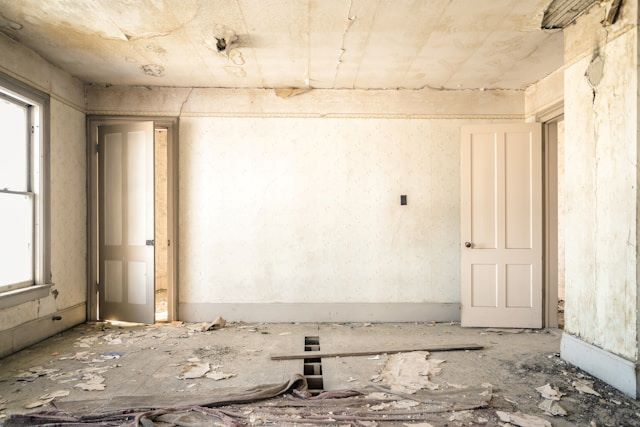While a nice mug of hot cocoa and your favorite blanket may help soothe away any shivers, if your walls aren’t properly insulated, that warm feeling may not last for long. In fact, without sufficient insulation in the attic, crawlspace, or walls, it takes a lot more energy and higher utility bills to keep your interior space heated and balmy. That’s why blow-in blanket insulation is such an intelligent solution for your home’s comfort needs this winter and for many winters.
Made of soft, fibrous material that is gently pneumatically installed, blow-in insulation creates an impenetrable barrier against drafts while trapping more of the heat your furnace produces inside. In this post, we’ll explore the benefits of blow-in blanket insulation so you can stay cozy without breaking the bank when temperatures drop.
Why Choose Blow-In Blanket Insulation?
Choosing the proper insulation for your home ensures warmth, energy efficiency, and cost savings. Blow-in blanket (BIB) insulation, with its unique application method and material composition, is a superior choice for homeowners.
The advantages of opting for BIB insulation are numerous and influential in the decision-making process. Below, we will discuss the key benefits that make blow-in blanket insulation an optimal solution for maintaining a comfortable and energy-efficient home environment.
Enhanced Energy Efficiency
BIB insulation offers superior coverage that traditional batt insulation might miss, filling in gaps and crevices to create a tight seal. This comprehensive coverage means your heating and cooling systems work less to maintain your desired indoor temperature, reducing energy consumption and lowering utility bills.
Improved Indoor Comfort
The tight seal created by BIB insulation helps maintain a consistent indoor temperature, eliminating cold spots and drafts. This results in a more comfortable living space throughout the year, irrespective of the weather conditions outside.
Environmental Friendliness
Made from recycled materials, blow-in insulation is an eco-friendly choice for conscientious homeowners. Reducing the energy needed to heat and cool your home also lowers your carbon footprint, contributing to a healthier planet.
Noise Reduction
The dense material of BIB insulation acts as an effective sound barrier, significantly reducing the transmission of noise from outside and between different rooms and floors inside your home. This benefit is precious in crowded neighborhoods or for homes near busy streets.
Quick and Easy Installation
Unlike traditional, time-consuming, invasive insulation methods, blow-in blanket insulation can be installed quickly with minimal disruption to your daily life. Its non-invasive installation process makes it an ideal choice for both new constructions and retrofit projects.
Long-Term Durability
One of the most appealing aspects of blow-in blanket (BIB) insulation is its longevity. Due to its resilience and ability to maintain shape over time, BIB insulation doesn’t settle or degrade like other insulation materials. This means it continues to perform optimally for years, ensuring that your home remains energy-efficient and your utility costs stay low for the long term.
Versatility in Application
Blow-in blanket insulation is incredibly versatile, making it suitable for a wide variety of spaces within a home. Whether it’s the attic, walls, or even hard-to-reach nooks and crannies, BIB can effectively insulate these areas without compromise. This flexibility ensures that every part of your home is protected from energy loss, keeping it cozy and comfortable no matter the season.
Pest Resistance
An often overlooked benefit of blow-in blanket insulation is its resistance to pests. The materials used in BIB insulation are not attractive to rodents or insects, thereby reducing the risk of infestations within your home. This pest-resistant characteristic adds an extra layer of protection for your home, safeguarding against the cold and heat and potential damage caused by pests.
Blow-In Blanket Insulation: Installation and Maintenance Considerations
Installing blow-in blanket (BIB) insulation is a straightforward process that yields long-term benefits for homeowners. However, to maximize its advantages, considering specific aspects of installation and maintenance is crucial. Proper installation ensures optimal performance, energy efficiency, and home comfort, while regular maintenance secures the longevity of the insulation’s effectiveness. Below, we explore several vital considerations every homeowner should be aware of before proceeding with BIB insulation in their home.
Choosing the Right Contractor
Selecting a reliable and experienced contractor is the first step toward ensuring the effective installation of BIB insulation. Look for professionals with a proven track record in insulation projects, particularly with blow-in techniques. Verify their credentials, ask for references, and read online reviews to gauge their reputation and the quality of their workmanship.

Assessing Your Home’s Insulation Needs
Before installation begins, a thorough assessment of your current insulation situation and your home’s specific needs is essential. This evaluation will help determine the amount and type of BIB insulation required to achieve the best results. Factors such as the age of your home, existing insulation, and areas prone to heat loss should be considered during this process.
Preparing Your Home
Preparing your home for the installation of BIB insulation is a critical step. This preparation might include sealing air leaks, addressing moisture issues, and ensuring proper ventilation in areas like the attic. These measures prevent potential problems such as mold growth and ensure that the insulation performs effectively.
Understanding the Installation Process
Familiarizing yourself with the installation process can provide peace of mind and ensure the project goes smoothly. The process involves using specialized equipment to pneumatically blow the fibrous material into place, creating a dense, seamless barrier against heat loss. It is quicker than traditional insulation methods, but knowing what to expect can help manage your expectations and prepare for any temporary disruptions.
Maintenance and Upkeep
Although BIB insulation is known for its durability and long-lasting performance, periodic checks are advisable to maintain its effectiveness. Inspections can identify areas where the insulation may have shifted or settled, although less common with BIB, and ensure vents and air channels remain unblocked. This proactive approach to maintenance will contribute to sustained energy efficiency and comfort in your home.
Future Modifications to Your Home
If you plan on renovating or modifying your home, consider how this might affect the installed BIB insulation. Understanding the flexibility and adaptability of blow-in blanket insulation in accommodating future changes can influence the planning and execution of such projects, ensuring that your home’s thermal barrier remains intact and effective.

Closing Thoughts
Blow-in blanket insulation offers numerous benefits for homeowners, from energy efficiency and cost savings to comfort and peace of mind. By understanding the considerations discussed in this guide, you can make informed decisions about implementing BIB insulation in your home and enjoy its long-term advantages. Remember to always consult with a professional contractor for expert advice on insulation for your home and maximize the effectiveness of this versatile insulation option.








